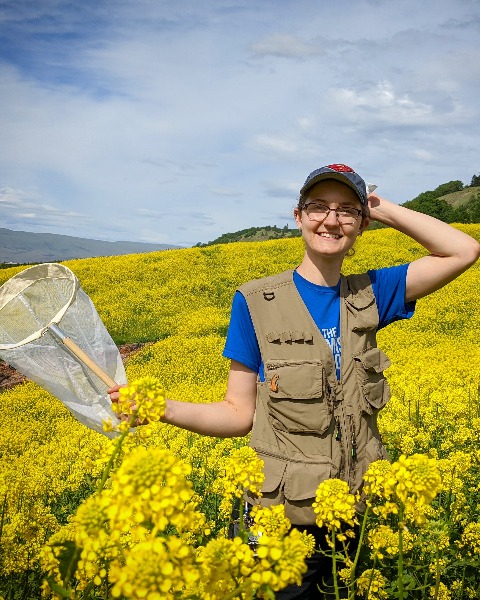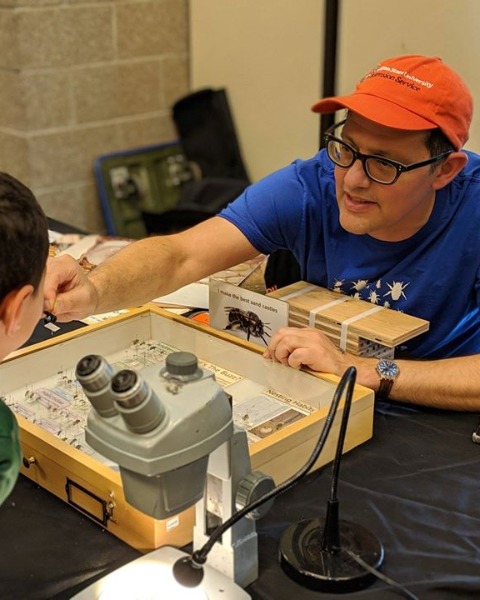P-IE
Student Competition 10-Minute Paper
Grad 10-min: P-IE, Pollinators 2
Pesticide risk to honey bee and native bee species in sweet cherry orchards and surrounding native oak habitat
On-Demand

Emily A. Carlson
Oregon State University
Corvallis, Oregon
Andony Melathopoulos
Oregon State University
Corvallis, Oregon
Ramesh Reddy Sagili (he/him/his)
Oregon State University
Corvallis, Oregon
Presenting Author(s)
Co-Author(s)
The European honey bee, Apis mellifera L., is commonly used as a surrogate to understand pesticide risk to all bees; yet, honey bees have different life history and foraging behavior than most bees native to North America.
One key assumption in the current pesticide risk model is that, despite differences in forage preferences and behavior3, all bees in agriculture are exposed to the same level of pesticide risk. We tested the assumption that native bees and honey bees share similar pesticide exposure patterns in cherry production in Oregon, USA. This landscape places a rich native bee community alongside commercial crop production where insecticides are used to control pests. Moreover, orchardists plant bee-attractive cover crop amid the cherry orchard and oak habitat.
This study compares pesticide risk of honey bees and native bees by examining pollen forage overlap in sweet cherry orchards, native oak habitat, and bee-attractive cover crops. Twelve commercial cherry orchards, six native oak fragments, and five cover crop plots were assessed for honey bee and native bee presence. We estimated exposure by comparing the bee communities and plants found within the orchard, to those in oak and in cover crop. In addition, we will estimate risk for different bee taxa by analysing pesticide residues from pollen collected by honey bees from different plant species. We found that there is considerable difference between pesticide exposure of honey bees and native bees across land use types in commercial cherry.
One key assumption in the current pesticide risk model is that, despite differences in forage preferences and behavior3, all bees in agriculture are exposed to the same level of pesticide risk. We tested the assumption that native bees and honey bees share similar pesticide exposure patterns in cherry production in Oregon, USA. This landscape places a rich native bee community alongside commercial crop production where insecticides are used to control pests. Moreover, orchardists plant bee-attractive cover crop amid the cherry orchard and oak habitat.
This study compares pesticide risk of honey bees and native bees by examining pollen forage overlap in sweet cherry orchards, native oak habitat, and bee-attractive cover crops. Twelve commercial cherry orchards, six native oak fragments, and five cover crop plots were assessed for honey bee and native bee presence. We estimated exposure by comparing the bee communities and plants found within the orchard, to those in oak and in cover crop. In addition, we will estimate risk for different bee taxa by analysing pesticide residues from pollen collected by honey bees from different plant species. We found that there is considerable difference between pesticide exposure of honey bees and native bees across land use types in commercial cherry.


